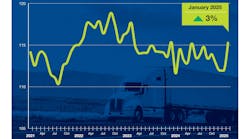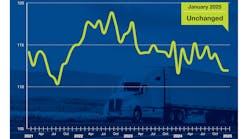The U.S. Energy Information Administration (EIA) forecasts that U.S. crude oil production will average 11.9 million barrels per day this year and 12.8 million barrels per day in 2023, which would surpass the record average production of 12.3 million barrels per day set in 2019.
Despite the increases in production, EIA expects the Brent crude oil price to remain above $100 per barrel this year, according to the agency’s May 2022 Short-Term Energy Outlook (STEO).
“A high level of uncertainty remains in our outlooks, but we have consistently forecast that elevated crude oil prices would help drive record-level annual U.S. oil production levels in 2023,” said Joe DeCarolis, EIA administrator. “Low global oil inventories coupled with continued high demand for gasoline, diesel, and other petroleum products means that increased production likely won’t have much impact on prices in the short term.”
EIA also recently published its annual Summer Electricity Industry Outlook, which forecasts that continued U.S. economic growth will increase electricity use by 0.4% in the United States this summer (June-August) compared with the summer of 2021. EIA forecasts that retail sales of electricity to the industrial sector will grow by 2.8% and by 1.5% in the commercial sector.
EIA expects that U.S. households will use 2.9% less electricity this summer compared with last summer, largely because of weather forecasts for a cooler summer this year. Higher electricity prices mean that the average U.S. household will pay about the same amount for electricity this summer as last summer.
Other key takeaways from the May 2022 STEO forecast include:
Solar and wind power will provide 11.1% of U.S. electricity generation this summer, up from 9.6% in summer 2021. Solar and wind are the only energy sources that will increase their share of U.S. electricity generation this summer. “High natural gas prices, limited coal supply, and increased solar and wind capacity mean that renewables should play a larger role in the U.S. electricity mix this summer and throughout the year,” DeCarolis said.
The Henry Hub natural gas price will average $8.59 per million British thermal units in the second half of 2022, which is an 88% increase from the second half of 2021. This forecast is a significant revision from previous forecasts, largely because EIA updated its power generation modeling to better account for evolving constraints in the coal market.
U.S. coal production will total 598 million short tons in 2022, which is a 3% increase from 2021. Last month’s STEO forecast a 7% increase in domestic coal production, and based in part on this revision, we expect higher natural gas prices later this year. “Currently low coal supplies and limited capacity to increase domestic coal production mean that natural gas will remain in high demand for electricity generation, contributing to the higher natural gas prices in our forecast,” DeCarolis said.










